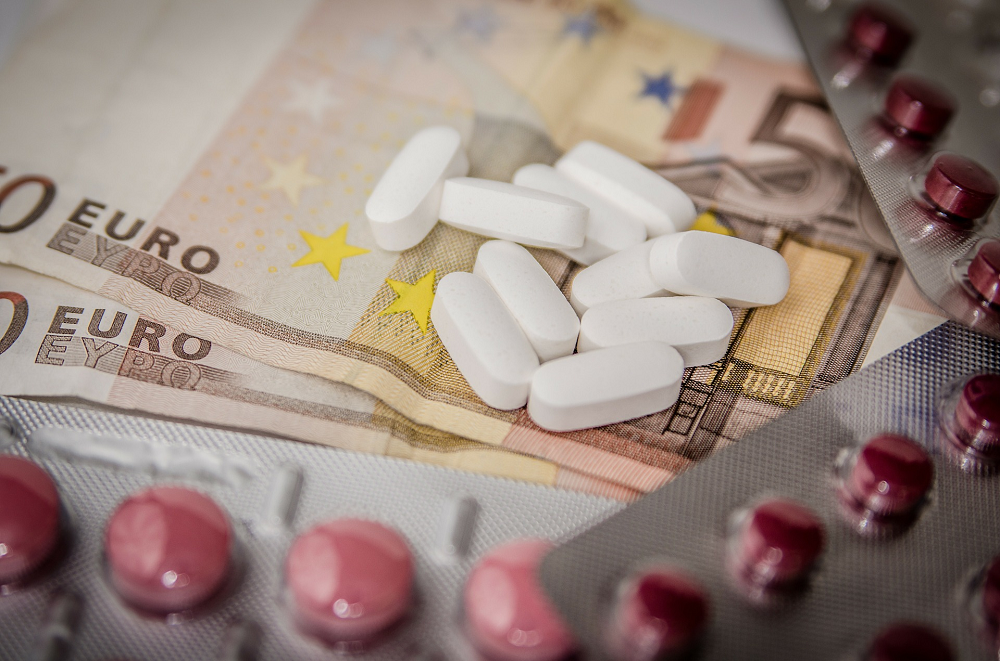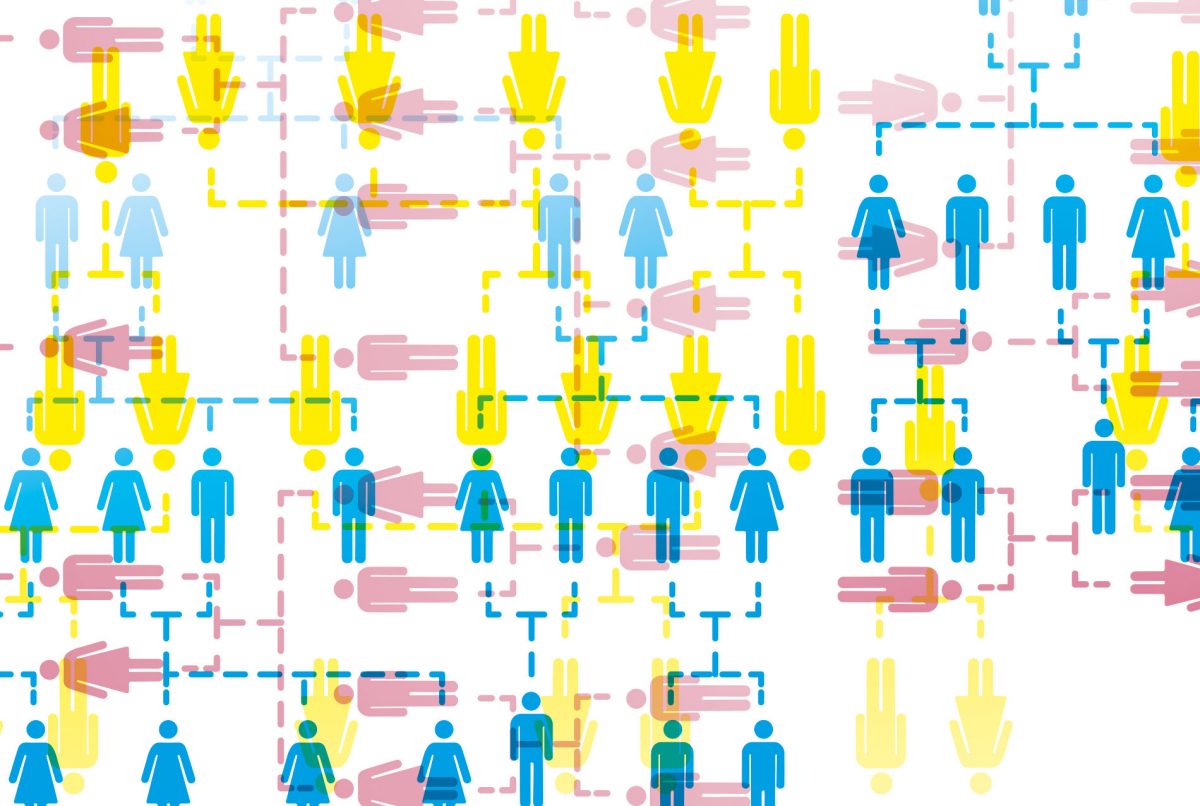You might find that there are more rules and regulations surrounding recycling and waste management in the Netherlands than you are accustomed to in your home country. These laws are partly responsible for the Netherlands’ reputation as an extremely ‘green’ country. Holland’s wide-open fields and acres of farmland have something to do with this as well! However, it refers mainly to the mentality of the Dutch, who care deeply about protecting their environment. This article will explain how recycling and waste management works in the Netherlands. It will also cover how you can separate and dispose of your own waste, in the ‘greenest’ way possible!
Environmentalism in NL
The Netherlands put an admirable amount of effort and resources into environmental preservation. Here are a few examples:
- The ‘Ministerie van Infrastructuur en Milieu‘ is in charge of environmental matters. They are the ‘Ministry of Infrastructure and water management’ in the Netherlands
- They work in close cooperation with international and domestic partners, to improve the living environment of the country
- Their domestic partners include the many Dutch organizations, working to monitor issues like: living space, respect for nature and raw materials in the Netherlands
- Over 4,000 people in Holland are employed to address issues related to living space, housing and environment in this country
- Efforts are also made to plan, conduct and supervise government projects, concerned with housing and environmental sustainability policies
Personal Eco Efforts
Improving and protecting the environment is not only left to those at the top either! Dutch citizens take individual responsibility for environmental well-being:
- The vast majority of the Dutch population recycles their waste
- Many people in the Netherlands separate, and correctly dispose of, their organic waste
- This waste goes on to be made into compost, and reused in gardens and agriculture
- For every two million tons of paper and glass, collected in the Netherlands, close to 90% gets recycled and used to make new products
Teams and Organisations
- There are numerous environmentalist programs and activities that any resident of the Netherlands can join
- If you wish to become involved in a local environmental group, check with your municipality to see what is available
- There are ‘eco-teams’ in many neighborhoods. These teams work hard to spread the message about how important it is to recycle, in order to protect the environment
If you are unable to join a team you can still take steps to protect the environment, in the Netherlands. By using the recycling and waste management system you are helping the cause. Find out how it all works on this page!
 Side Note
Side Note
Recycling tax
- Whenever you purchase any new, electronic or household equipment, you will automatically be charged a ‘recycling tax’ on it
- This is also known as ‘removal tax’, and translates as ‘verwijderingsbijdrage’ in Dutch
- You will be charged this tax, whether or not you are handing in an old appliance, as you purchase the new one
- The thinking behind this is that, for each new appliance purchased, the old one will have to be environmentally disposed of or recycled at some point in time
- A list of rates will be available from the store
Household waste in NL: The basics
Waste Containers
Outside of Amsterdam, most Dutch households are given between two and four separate waste containers. They are for:
- Green waste
- Paper waste
- Plastics metal, and drink packaging (PMD)
- All remaining waste
Dutch families separate their waste out into these bins themselves. It can take a bit of time to get used to this system! So, here are some tips to get you started:
Separating your Waste
- The containers are emptied on alternating weeks. So, when you first arrive in a new neighbourhood, try to take note of which container gets taken away when. Or, just ask your neighbours. If you place the wrong container on the curb-side, it will not be emptied
- In some cities, a multi-purpose waste container will be provided. This is called a ‘duobak‘
- A duobak is a single container with two separate compartments inside it. It has a smaller section in the back, which is intended for ‘green’ waste. The larger compartment in the front is for all other waste
- If you believe that there are an insufficient number of containers in your area, or that they are not up to scratch for any reason, you can contact the city council. They can provide you with additional containers and make repairs
- Bare in mind that requesting more containers will mean that you will have to pay an additional yearly contribution
- Make sure you do not leave your containers on the street at the end of the day! You could be fined for not returning them to your property
But what do you put in each bin exactly? And what if your municipality has an unusual recycling system? We will take you through all the different types of waste, and how to recycle them, below.
1. Green Waste
In the Netherlands, your green waste should be disposed of in a ‘groenbak’ container. Here is what does, and does not, constitute ‘green waste’:
Not for the Groenbak
The following products must NOT be put in your groenbak:
- Cat litter. This should be put in the grey container
- Baby diapers. This should be put in the grey container
- Milk packages
- Plastic bags
- Large pieces of wood and thick tree branches
- The ashes from your fireplace
- Sand
- Dog and cat hair
- The contents of your vacuum cleaner
For the Groenbak
The following items are categorized as ‘green waste’, and should be disposed of in the groenbak:
- Vegetables
- Fruits
- Potato peelings
- Leftover cooked food
- Fish
- Meat leftovers with bones. This must be wrapped in newspaper during the summer months
- Nut shells
- Eggshells
- Hardened cooking fat
- Tea bags
- Coffee filters with coffee grains
- Small garden trimmings
- Mowed grass
- Leaves
- Weeds
- Flowers
- Houseplants
- Straw
- The contents of your hamster or rabbit cage
2. Glass
There are excellent glass recycling facilities in the Netherlands. However, you may well be able to return your bottles to the shop for a partial refund, rather than disposing of them. You can get a refund on the following types of bottle:
- Glass soft drink bottles
- Large acrylic plastic bottles. These are called ‘euroflessen’ in Dutch
- Some small glass bottles or jars
Reimbursed for your Bottles
The system works as follows:
- If you buy a glass item from a shop, with the word ‘statiegeld‘ on it, a small deposit for the glass will be included in the price. ‘Statiegeld‘ means ‘deposit’, in English
- The deposit amount will be listed on the product’s label
- There are special bottle stations for these glass items in most supermarkets
- When you have consumed the contents of the glass item, and washed it, bring it back to the store when you next shop there
- Place your bottles into the bottle return station
- A ‘bonnetje’, or ‘paper receipt’ will be dispensed from the bottle return machine, when you have finished
- Show this receipt to the check-out staff when you go to pay for your groceries, and get your deposit returned
Recycling Glass in NL
If you have glass waste items that did not come with a deposit, you can easily recycle them instead:
- Your glass should be dropped into one of the special glass containers
- A glass container is called a ‘glasbak’ in Dutch
- These are usually placed at convenient locations throughout a town. You might find one, for example, in the supermarket parking area
- You can usually spot a glasbak from its label. It shows a hand, holding a bottle
- Glass containers, or ‘glasbakken’, are often yellow
- Some containers have different sections for white, green and brown glass
- If this is an option in your city, the glass container will have three compartments, labelled: bont (white), groen (green), and bruin (brown)
Today, the Dutch manage to recycle more than 89% of their glass; that’s impressive!
3. Paper
Most paper in the Netherlands is recycled too. It is very simple to recycle your paper! All you have to do is put it into the right container:
- The paper recycling container is often placed near the glass container
- The paper container is usually blue in color
- Paper recycling containers are called ‘papierbakken‘, in Dutch
Into the Paper Container
You can put the following items in the paper container:
- Old newspapers
- Magazines
- Envelopes
- Paper packaging
- Paper wrappers
Don’t forget to remove any plastic from these items first. Remember those envelope windows!
4. Batteries
Do not throw your old batteries in with your other waste! This is how you can dispose of them safely:
- Most supermarkets, and some stores and schools, have special containers for collecting old batteries
- Often, these are located by the bottle recycling station at the grocery store, or at the checkout counter in the store
- The container is called a: ‘batterijenbak‘
- It is usually colored red or blue
- If you cannot find a battery container, ask the staff in the supermarket where your nearest collection point is. Or, you could inquire at the city council
- Batteries can also be handed in with your other ‘chemical waste’. This is discussed in the paragraph below
5. Chemical Waste
What is chemical waste? It refers to items, such as:
- Paint and painting materials
- Toners
- Printer cartridges
- Batteries
- Oil
- Turpentine
- Nail polish
- Caustic cleaning agents
The chemokar
How are these substances disposed of?
- Many cities have a special car that comes by every three months to collect chemical waste
- It is called a ‘chemokar’
- The waste calendar, which is described below, will list the dates that the chemokar will visit your area
- If you do not have a calendar, you can check the dates at the city council
- Alternatively, you can dispose of your chemical waste at the waste separation and recycling station. There will be one available in nearly every city and town in the Netherlands
6. Medicine
In the Netherlands, outdated prescriptions and over-the-counter drugs should be handed in at the pharmacy, for proper disposal. These medicines might be substances like:
- Pills
- Cough syrup
- Suppositories
- Antibiotic ointments
7. Clothing
If you clear out your closet, you are bound to find a few things in decent condition, that you are just never going to wear again. There’s no need to throw away that old denim jacket:
- Some cities and towns have a large container for clothes and shoes
- It will usually have been organized by a local, charitable organization
- Often, you will find it located close to a shopping area
Other Options for Old Clothes
If there is not a clothes container anywhere near you, there are other options:
- During the year, there are often special initiatives run by schools or churches to collect clothes for specific charities
- You can contact the Salvation Army about this. It is called ‘Leger des Heils‘ in the Netherlands. Or, you can contact an organization called Sympany. Both will give you advice about where to hand in your old clothes
8. Large Waste
Large waste, or ‘grof vuil‘ in Dutch, refers to objects like pieces of furniture and large items of household debris. Of course, if your large waste is in useable condition, and you are able to transport it, taking it to a charity or second-hand shop is a great way of recycling it. If this is not possible, however, you can dispose of it like so:
- Large waste can be collected by special appointment, through the city’s waste collection department
- The waste will be collected free of charge. However, it must comply with certain regulations
- The service will only be free if the item is under a certain size and weight
- Wooden parts must also be gathered together, and tied with rope
- If you have some large waste that does not meet the city regulations, it is best to bring it to the municipal waste separation and recycling station. This is called the ‘afvalscheidingsstation’, in Dutch
Private Disposal
Alternatively, it is possible to use a private service to collect and dispose of the large waste
- If you opt for this, you will pay for the delivery and removal of a ‘puinbak‘. This is a waste container that will be brought to the site of the debris
- It is common for these to be used during construction projects, which produce large amounts of debris
- To inquire about this service, contact your town hall and ask for ‘gemeentereiniging grof vuil‘
Separation and Recycling Station
As we mentioned above, the waste separation and recycling station is referred to as the ‘Afvalscheidingsstation‘ in the Netherlands. Anything that is too large to be put in your regular waste container, can be taken to a waste disposal station. It can also be used for specific items, such as chemical waste. Here is what you need to know:
- If you want to use the station for a one-off piece of household waste, you can simply turn up, and ask for instructions
- However, if you are arranging the disposal of a larger quantity of waste, for your business perhaps, you may have to pay
- Usually, you will be questioned upon entering the station. The staff there will ask you what kind of waste you want to discard, and will direct you to the right location
- There are separate containers for wood, cardboard, tires, stones and construction rubbish, and chemical waste
 Tip
Tip
Soil Disposal
- Soil and earth from your garden will not generally be accepted at the station
- If you really need to dispose of it, you will have to pay for a special government inspection
- Your soil will be tested for pollutants and contaminants such as oil, lead or chemicals
9. ICT Equipment
ICT equipment refers to items like:
- Computers
- Printers
- Scanners
If the equipment you want to dispose of is in working order, contact an IT Recycling service.
The Dutch Waste calendar
Unfortunately, in some Dutch cities, there are no waste separation facilities. This tends to be due to the lack of space in a city. If you live in a municipality like this, but you still care about recycling, all is not lost! With the help of an ‘Afvalkalender‘ you can take charge of your own recycling:
- Most towns publish a yearly ‘Afvalkalender‘. This is a ‘waste calendar’
- It lists contact addresses for places where you can dispose of all your waste properly, for yourself
- The calendar will also give you the pick-up dates for all the various waste containers
- The locations for chemokars will be on the calendar too. We talk about chemical cars earlier in this article, in our paragraph on chemical waste
Get your Hands on a Calendar
- If you did not receive one of these calendars, request one from your ‘gemeentereinigingsdienst’. This is your local sanitation department
- Or, you can download the calendar from your municipality’s website
- This calendar is usually distributed around November, and covers the coming year
- It should be distributed to every household within a municipality
- If you are able to, you can bring your rubbish to your nearest waste disposal station, in time for the collection
 Useful links
Useful links
Find further information about waste management in the Netherlands:

How Expats in the Netherlands Are D ...
The Netherlands has long been known for its financial savviness, and that mindset tends to ...

Understanding Mortgage Calculators ...
Buying a home in the Netherlands involves careful financial planning, especially for expats navigating the ...

Mortgage Interest Rates in 2025: Wh ...
As 2025 unfolds, expats navigating the Dutch housing market find themselves in a shifting financial ...

Be prepared for the Dutch housing m ...
Buying a house in the Netherlands may work a bit differently to what you are ...

Mortgage Interest Rates in the Neth ...
Mortgage interest rates can have a significant impact on homebuyers and homeowners. The average interest ...

Dutch 30%-ruling Tax Facility
The 30%-ruling is a tax advantage, created for employees who are posted or recruited ...

Obtaining a Mortgage as an Expat in ...
Obtaining a mortgage as an expat in the Netherlands can be a complex process, as ...

Banking made easy with ABN AMRO
When preparing to live in another country, you are instantly faced with the hurdles of ...

Four Legal Differences You Need to ...
Relocating to any country is a big step. Aside from all the cultural differences and ...

Patchwork Family
‘Patchwork families’ are families made up of parents and children, whereby one – or both – of ...